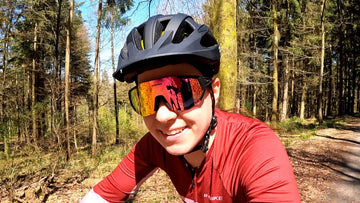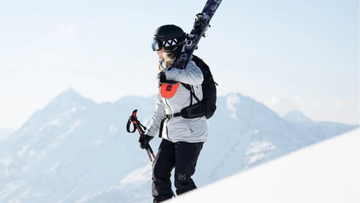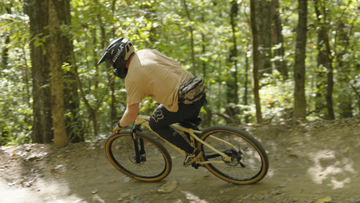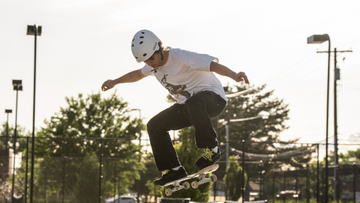What Muscles Does Cycling Work: A Comprehensive Guide


Cycling is an excellent form of exercise that not only provides a myriad of health benefits but also targets a variety of muscles in the body. In this guide, we will delve into the specific muscles that cycling works, as well as tips to maximize your cycling workout and avoid injuries. So, whether you're an avid cyclist or just starting, understanding the muscles involved can help you optimize your training.
Primary Muscles Worked by Cycling
Quadriceps
The quadriceps, or quads, are the large muscle group located at the front of the thigh. They are responsible for knee extension and hip flexion, making them a critical muscle group for cycling. As you push down on the pedals, your quads power the motion, propelling the bike forward.
Hamstrings
The hamstrings, found at the back of the thigh, are another essential muscle group for cycling. They work in tandem with the quadriceps to create a smooth and efficient pedaling motion. The primary function of the hamstrings in cycling is to flex the knee and extend the hip, which helps pull the pedal back up after the downward stroke.
Gluteal Muscles
The gluteal muscles, or glutes, are the muscles located in your buttocks. They play a crucial role in cycling by providing power and stability during the pedal stroke. The gluteus maximus, the largest of the three gluteal muscles, is responsible for hip extension and assists with maintaining proper form during the ride.
These are the main muscle groups responsible for propelling you forward during biking. The quads and calves work together to push the pedals down, while the hamstrings and glutes help pull the pedals back up.
Secondary Muscles Engaged in Cycling
Calf Muscles
While not as heavily engaged as the quadriceps, hamstrings, and glutes, the calf muscles also play a role in cycling. The gastrocnemius and soleus muscles help stabilize the ankle and assist in pushing the pedal down and pulling it back up.
Core Muscles
A strong core is crucial for maintaining stability and balance while cycling. The core muscles, including the rectus abdominis, obliques, and erector spinae, work together to support the spine and transfer power between the upper and lower body.
Upper Body Muscles
Although cycling primarily targets the lower body, the upper body muscles, such as the deltoids, trapezius, and latissimus dorsi, are also engaged. These muscles help support the body and maintain proper posture while gripping the handlebars and maneuvering the bike.
Although not as heavily involved as the primary muscle groups, these secondary muscles still play a crucial role in maintaining proper form and balance during cycling. They help keep your upper body stable and support your core engagement throughout the ride.
Variations in muscle activation based on biking types:
Road biking: Focuses more on endurance and speed, engaging the leg muscles for longer durations.
Mountain biking: Requires bursts of power and greater core strength for navigating rough terrain.
Indoor cycling: Allows for a controlled environment to focus on technique, resistance, and intensity.
Proper Biking Posture and Technique
Maintaining correct posture and technique while biking is essential for efficient muscle engagement and injury prevention. Here are some tips to ensure proper form:
- Keep your back straight and chest open.
- Engage your core to support your upper body.
- Maintain a slight bend in your elbows and keep your wrists neutral.
- Position your feet flat on the pedals with your knees tracking over your toes.
- Avoid hunching your shoulders or locking your elbows.
Muscle Imbalances
Cyclists often experience muscle imbalances due to the repetitive nature of biking. To address these imbalances and reduce injury risk, incorporate targeted exercises and stretches into your routine. These may include:
- Hip flexor stretches
- IT band stretches
- Glute activation exercises
- Single-leg exercises to promote balance
Flexibility and Mobility for Cyclists
Improving flexibility and mobility can prevent injuries and enhance your biking performance. Incorporate stretches and exercises focusing on:
- Hip mobility
- Hamstring flexibility
- Calf stretches
- Thoracic spine mobility
Progressing Your Biking Workouts
To continue improving your biking performance, consider:
- Increasing the intensity or duration of your rides
- Incorporating interval training or hill climbs
- Setting specific goals and tracking your progress
Fueling Your Body for Cycling Performance
Pre-Ride Nutrition
Proper nutrition before a cycling session is crucial for ensuring you have enough energy to sustain your workout. Aim to consume a balanced meal or snack consisting of carbohydrates, protein, and healthy fats 1-2 hours before your ride. Some examples include oatmeal with fruit and nuts, a banana with almond butter, or a whole-grain turkey and avocado wrap.
Hydration
Staying hydrated is essential for optimal cycling performance. Begin your ride well-hydrated and continue to consume water or electrolyte drinks throughout your workout to replace fluids lost through sweat. The exact amount of fluid needed varies based on factors such as duration, intensity, and environmental conditions.
Recovery Nutrition
Recovery nutrition plays a key role in replenishing glycogen stores and repairing muscle tissue after a cycling workout. Within 30-60 minutes after your ride, consume a balanced meal or snack that includes carbohydrates and protein, such as a smoothie with fruit and protein powder, Greek yogurt with granola, or a rice bowl with grilled chicken and vegetables.
Maximizing Your Cycling Workout
Proper Bike Fit
Ensuring your bike is properly fitted for your body is crucial for engaging the right muscles and preventing injury. Proper bike fit includes saddle height, handlebar position, and overall bike size.
Maintain Good Form
Maintaining good form while cycling helps ensure that you are working the correct muscles and avoiding unnecessary strain. Keep your back straight, engage your core, and avoid locking your elbows.
Incorporate Resistance Training
Adding resistance training to your workout routine can help strengthen the muscles used in cycling and improve overall performance. Exercises such as squats, lunges, and deadlifts can be particularly beneficial.
Preventing Injuries in Cycling
Warm Up and Cool Down
Always take the time to warm up before your ride and cool down afterward. This will help prepare your muscles for the workout and aid in recovery.
Stretch Regularly
Incorporate regular stretching into your routine to maintain flexibility and prevent muscle imbalances that can lead to injury.
Listen to Your Body
Pay attention to any signs ofpain or discomfort while cycling, and adjust your workout accordingly. Overworking or ignoring pain can lead to serious injuries. If the pain persists, consult a professional for guidance.
Cycling Safety Tips
To ensure a safe and enjoyable cycling experience, follow these essential safety tips:
Wear a Helmet
Always wear a properly fitted helmet to protect your head in the event of a crash.
Be Visible
Wear bright, reflective clothing and use lights on your bike, especially when riding in low-light conditions or at night.
Follow Traffic Rules
Obey traffic signals and signs, signal your intentions to other road users, and always ride in the same direction as traffic.
Stay Alert
Be aware of your surroundings, anticipate potential hazards, and always keep both hands on the handlebars and both feet on the pedals.
The Importance of Cross-Training for Cyclists
Improved Cardiovascular Fitness
Engaging in various forms of cardiovascular exercise can help improve overall endurance and aerobic capacity. Adding activities like swimming or running to your training routine can challenge your cardiovascular system in different ways, leading to a stronger and more efficient heart.
Increased Flexibility
Cycling tends to focus on specific muscle groups, which can lead to imbalances and tightness in certain areas. Incorporating flexibility exercises, such as yoga or Pilates, can help counteract these imbalances by stretching and strengthening various muscle groups throughout the body.
Reduced Risk of Overuse Injuries
Exclusively participating in a single form of exercise, like cycling, can increase the risk of overuse injuries due to repetitive stress on specific muscles and joints. By cross-training and participating in different activities, you can reduce the risk of these injuries by distributing stress across a wider range of muscles and joints.
Enhanced Mental Engagement
Cross-training can also help prevent burnout and boredom by providing variety in your workout routine. Engaging in different activities can keep you mentally stimulated and motivated, allowing you to maintain a consistent and enjoyable exercise routine.
Incorporating cross-training into your fitness regimen can lead to improved overall health, increased flexibility, and reduced risk of overuse injuries. By embracing a well-rounded approach to your training, you can enhance your cycling performance and overall well-being.
Conclusion
In conclusion, cycling is a fantastic form of exercise that engages a wide range of muscle groups, promoting overall fitness and well-being. Understanding the specific muscles worked during cycling, as well as incorporating proper nutrition, resistance training, and cycling safety measures, can help you optimize your workouts and achieve your fitness goals.
Whether you prefer indoor or outdoor cycling, a balanced approach that includes varied terrain, intensity levels, and workout types will keep your training enjoyable and effective.
By focusing on the primary muscles such as the quadriceps, hamstrings, and gluteal muscles, and supporting your body with proper hydration, nutrition, and bike fit, you can maximize the benefits of your cycling workouts.
Moreover, the secondary muscles engaged, such as the calf muscles, core muscles, and upper body muscles, contribute to a well-rounded fitness routine. Embracing these tips and insights will not only enhance your cycling performance but also improve your overall health and quality of life. So, gear up and enjoy the ride!
Frequently Asked Questions
How can I improve my cycling endurance?
To improve cycling endurance, gradually increase the duration and intensity of your rides. Incorporate interval training, hill climbs, and long, steady rides into your routine. Additionally, focus on proper nutrition, hydration, and recovery to support your training.
Can cycling help with weight loss?
Yes, cycling can be an effective tool for weight loss when combined with a healthy diet and overall fitness plan. Cycling burns calories and helps improve cardiovascular health, both of which contribute to weight loss and overall well-being.
Is cycling a good workout for beginners?
Cycling is an excellent workout for beginners, as it is low-impact, easily scalable, and can be tailored to individual fitness levels. Start with shorter, less intense rides and gradually progress as your fitness improves.
How often should I cycle for optimal results?
For optimal results, aim to cycle at least three to five times per week, incorporating a mix of intensity levels and ride durations. Remember to also include rest days for recovery and overall muscle growth.
Can cycling help improve my running performance?
Yes, cycling can help improve your running performance by strengthening the muscles used in both activities and providing a low-impact form of cross-training. Cycling can also help improve cardiovascular fitness, which translates to better endurance and performance in running.













